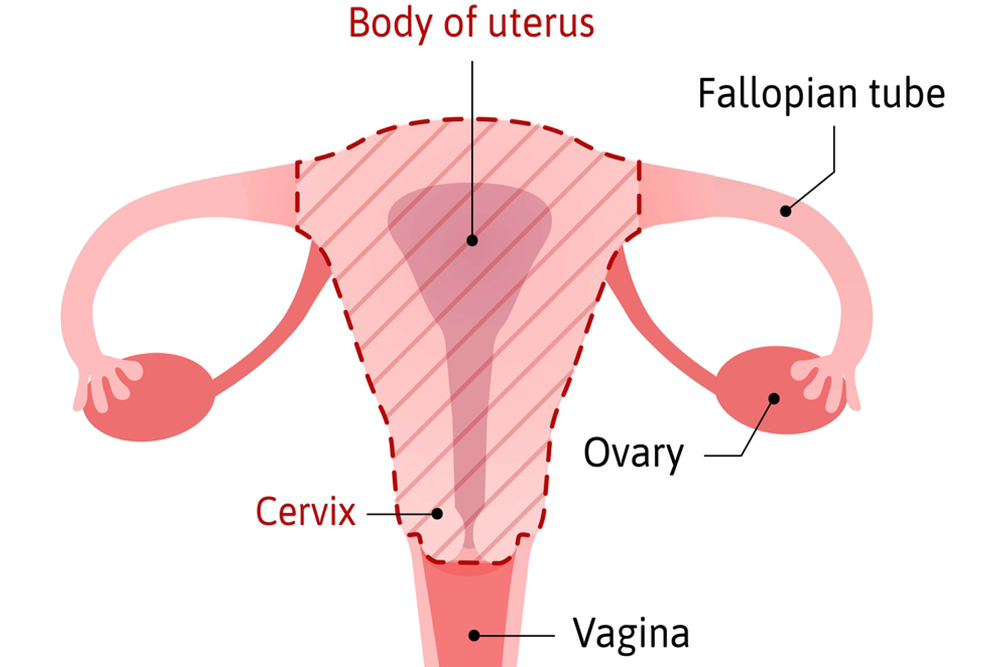
Understanding Your Mammogram Results
Interpreting mammogram results can be an emotional and confusing process for many women. These results...
Read MoreHysterectomy, a surgical procedure involving the removal of the uterus, is often considered a last resort treatment for several gynecological conditions. Whether due to fibroids, endometriosis, or cancer, this surgery can offer significant relief and even life-saving benefits.
Understanding the types of hysterectomy and their benefits is essential for patients contemplating this procedure. By exploring the different approaches, patients can make informed decisions in collaboration with their healthcare providers, ensuring the best outcomes for their needs.

A supracervical hysterectomy, also known as a partial or subtotal hysterectomy, involves the removal of the upper part of the uterus while leaving the cervix intact. This type of hysterectomy is less invasive than total hysterectomy. It is often recommended for women with conditions such as fibroids or heavy menstrual bleeding, where complete removal of the uterus is unnecessary.
One of the primary benefits of this procedure is that it often results in a shorter recovery time and fewer complications compared to more extensive surgeries. Patients who undergo supracervical hysterectomy typically no longer experience menstrual periods, but it is important to note that cervical cancer screenings should continue as recommended by healthcare providers.
Women who opt for this procedure may find it appealing due to the preservation of the cervix, which can sometimes contribute to maintaining sexual function post-surgery.
Total hysterectomy is the most common type of hysterectomy performed. In this procedure, both the uterus and cervix are removed. This approach is often chosen for conditions such as uterine fibroids, endometriosis, and uterine cancer.
The removal of the cervix means that Pap smears are no longer necessary if the patient has a history of negative results, providing significant relief for those who find these screenings uncomfortable or anxiety-inducing.
The benefits of a total hysterectomy extend beyond symptom relief; for women with cancer, it can be life-saving by eliminating the source of malignancy. For many women, the procedure also alleviates chronic pelvic pain and abnormal bleeding, significantly improving their quality of life.
A gynecologist specialist will evaluate whether a total hysterectomy is best based on the patient's medical history and current health status.
A radical hysterectomy is an extensive surgical procedure typically reserved for cancer treatment. It involves the removal of the uterus, cervix, surrounding tissue, and the upper part of the vagina. In some cases, nearby lymph nodes are also removed to prevent cancer from spreading. This procedure is most commonly performed for cervical or endometrial cancer.
The primary benefit of radical hysterectomy is its effectiveness in removing cancerous tissues and preventing further cancer development.
While it is a more invasive procedure than other types of hysterectomy, it offers the best chance of survival and recovery for patients with advanced cancer.
The surgery is often accompanied by additional treatments, such as chemotherapy or radiation, to ensure comprehensive cancer care.
This type of hysterectomy involves the removal of the uterus, cervix, fallopian tubes, and ovaries. It is often recommended for patients at high risk of ovarian cancer or those with certain gynecological conditions such as endometriosis or severe pelvic inflammatory disease. By removing the ovaries and fallopian tubes, this procedure significantly reduces the risk of ovarian and fallopian tube cancers.
Women who undergo hysterectomy with bilateral salpingo-oophorectomy often experience relief from severe symptoms associated with their conditions, including chronic pain and heavy bleeding.
Additionally, for women with a high genetic risk for breast or ovarian cancer, this surgery can provide peace of mind by significantly lowering cancer risk.
However, it also induces menopause, so patients must consider hormone replacement therapy and other post-surgical treatments to manage menopausal symptoms.
Hysterectomies can be performed using various surgical techniques, each with its benefits and considerations. The choice of technique depends on the patient's medical condition, the size of the uterus, and the surgeon's expertise.
Abdominal hysterectomy is an open surgery that requires a larger incision in the abdomen. This method is often used for larger uteri or complex cases and typically involves a longer recovery period. In contrast, a vaginal hysterectomy involves removing the uterus through the vagina, resulting in less invasive surgery and a shorter recovery time.
Laparoscopic hysterectomy is a minimally invasive technique that uses small incisions and a camera to guide the surgery. This approach generally leads to less postoperative pain and quicker recovery compared to abdominal hysterectomy.
Robotic surgery, a form of laparoscopic surgery, offers enhanced precision and visualization, allowing the surgeon to control robotic instruments for improved outcomes.
The benefits of a hysterectomy can vary based on the type performed and the underlying condition being treated. For many women, a hysterectomy provides significant relief from symptoms associated with conditions like fibroids, endometriosis, and heavy menstrual bleeding.
These symptoms often include chronic pain, abnormal bleeding, and pressure on the bladder or bowel, which can severely impact daily life.
For those diagnosed with gynecological cancers, a hysterectomy can be a life-saving procedure, removing cancerous tissues and potentially preventing cancer spread. Women with a high genetic risk for certain cancers, such as ovarian cancer, may find that a hysterectomy with the removal of ovaries and tubes significantly lowers the risk of developing these malignancies.
Ultimately, many women report an improved quality of life post-surgery, free from the debilitating symptoms that led to the procedure. This improvement can enhance mental health and well-being, allowing patients to enjoy a more active and fulfilling life.
If you're considering a hysterectomy, it's essential to understand the different types and their benefits to make an informed decision.
The Women's Center prioritizes your health and well-being, offering personalized care and guidance. Our experienced team is dedicated to providing compassionate support and expert advice, ensuring you receive the best care for your needs.
Contact us today to schedule a consultation and discuss your options with our knowledgeable specialists. Let us help you take control of your health and enhance your quality of life with confidence.




Interpreting mammogram results can be an emotional and confusing process for many women. These results...
Read More
Hysterectomy, a surgical procedure involving the removal of the uterus, is often considered a last...
Read More
Menopause marks a significant transition in a woman's life, bringing about various changes that can...
Read More